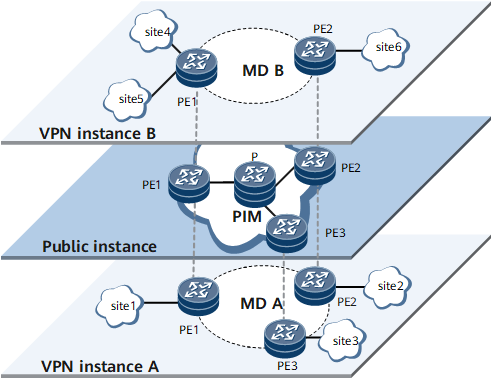Overview of IPv4 Multicast VPNs
This section describes the concept of an IPv4 multicast VPN and the network conditions that must be met for IPv4 multicast VPN implementation.
BGP/MPLS VPNs are widely applied because they are easy to deploy and control. As network applications become more and more popular, VPN users now require Internet Protocol Television (IPTV) services, multimedia on-demand services, and real-time video conference services.
Unicast transmission of IPTV, multimedia on-demand, and real-time video conference services wastes too much bandwidth.
The P on the public network does not know the routing and forwarding (VRF) table of each VPN instance and therefore is unable to forward the VPN multicast data.
A multicast VPN can solve the problems. It allows the multicast data of private networks to be transmitted to the destination over the public network.
As shown in Figure 1, three independent instances are configured on the network to carry multicast services, VPN A, VPN B, and public network instance. They are independent of each other, and each instance corresponds to an isolated plane.
The following takes VPN A as an example to describe how a multicast VPN works:
The multicast source S1 belongs to VPN A. S1 sends multicast data to a multicast group G.
Among all possible data receivers, only members of VPN A (namely, site 1, site 2, and site 3) can receive multicast data from S1.
Multicast data is multicast on various sites and the public network.
